The Monk's Way - Felley
Priory
This page
was added to the site on 02 May 2004
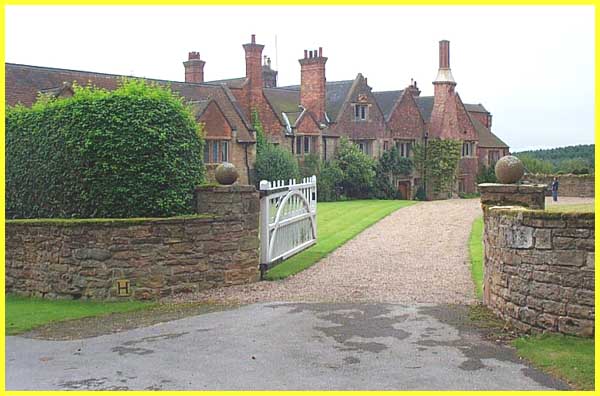
In the previous instalment about The Monk's Way,
we discovered that Beauvale Priory was founded in 1343 as a Carthusian
monastery. Continuing a little further northwards from Beauvale
we soon reach the highest and most northerly point in this project
at Felley where Felley Priory pre-dates that of Beauvale by almost
two hundred years. It was founded in 1156 for Augustinian or
Black Canons and like Beauvale, very little of the original structure
remains; the site today being occupied by a long low Elizabethan
house.
|
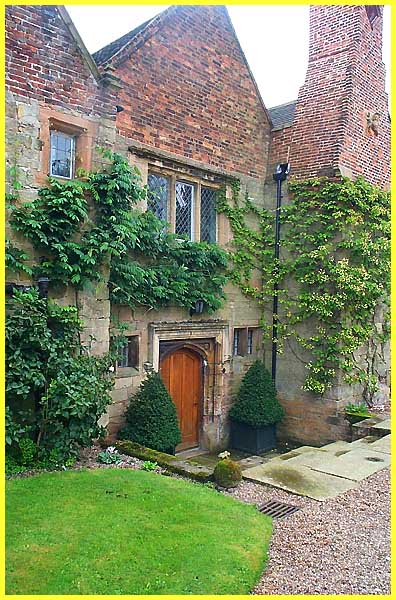
The Priory was founded by the Lord of Annesley, Ralph
also known as Raddulph Britto and was dedicated to the Blessed
Virgin Mary. It fell victim to Henry VIII in 1536, when it was
valued at just under £41. Later that century a new smaller
house was built, which was added to in 1886. In 1644 it was owned
by Gilbert Millington, a Parliamentarian and during the civil
war it was garrisoned and plundered by the Royalist army of the
Marquis of Newcastle. This doorway on the northern side of the
house looks to be one of the oldest parts of the building.
|
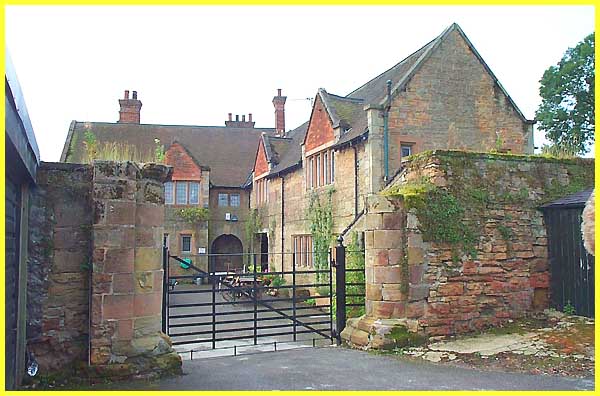
Felley Priory is now owned by the Chaworth-Musters
family who have lived here since 1974 when Robert P. Chaworth-Musters,
the descendant of the marriage between Mary Ann Chaworth and
John Jack Musters, moved here from Annesley Hall. Since that
time, the gardens have been developed and are now a well known
local attraction. The present layout actually dates from 1976
and visitors reach the gardens via this entrance on the south-eastern
side of the house.
|
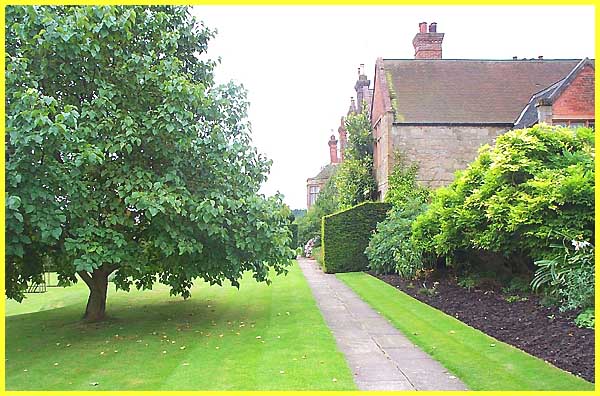
The Elizabethan House was added to in 1886 and during
the 1890's the gardens were terraced on the site of the old priory.
Neatly manicured lawns and paved paths are the sight that first
greet the visitor but there is much more to be found within the
boundary. The house stands at an elevation of over 600 feet above
sea level in quite an exposed position but shelter is provided
by yew hedges which were planted by the Chaworth-Musters family
as protection for the herbaceous borders enabling them to be
in flower from May to October each year.
|
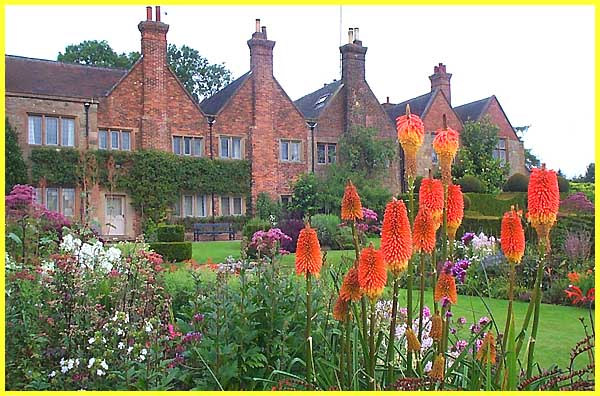
These pictures were taken in September and are proof,
if any were need, that the shelter provided by the hedges fulfils
its objective. The gardens also have pergolas, knot and rose
gardens as well as the herbaceous borders, a pond, an orchard
and even a mediaeval garden.
|
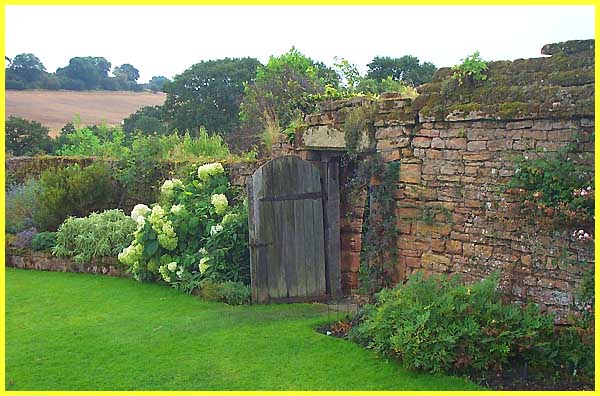
Planting has been done in a sympathetic manner to
complement existing structures and walls and even though little
of the Priory now remains, it would not be difficult to imagine
a monk or two tending the plants. When I first started this project,
there seemed to be very little on the internet about Felley but
enter the words "Felley Priory" into a search engine
now and a number of results are returned. I have only touched
on the history of the Priory here and only because it is known
that monks of the religious establishments at Lenton, Newstead,
Dale, Beauvale and Felley had land and mining interests in the
Erewash Valley as early as the fourteenth century. If you would
like to know more, I would recommend a visit to the Nottinghamshire
History and Archaeology site to read about the history of Felley Priory.
To see more of my images of the gardens, you can open a new window
by clicking here.
In the next part of this project our exploration
of the Monk's Way returns to the outskirts of Nottingham at Strelley
where we will start to follow the route to Ilkeston and beyond.
|